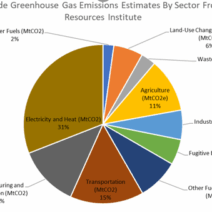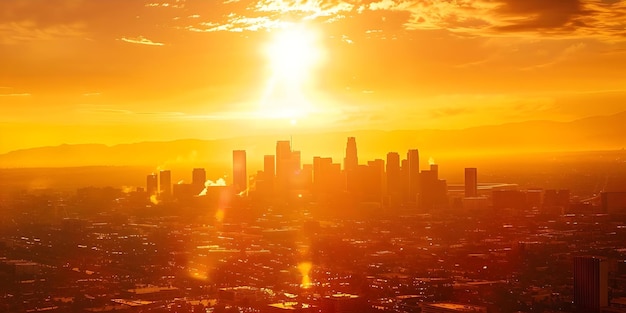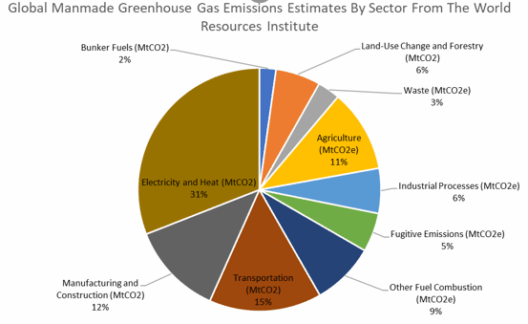As the United States grapples with rising temperatures and extreme weather events, the phenomenon of global warming emerges as a pressing concern for American citizens and various states across the nation. Urban areas, with their unique landscapes and demographics, are particularly vulnerable to the heat, leading to a myriad of societal and environmental repercussions. Understanding the intricate relationship between climate change and its ramifications is essential for formulating effective mitigation strategies and fostering sustainable practices.
The heatwaves experienced in recent years are not mere anomalies; they have become an alarming regularity, punctuating the American summer with sweltering temperatures. The National Oceanic and Atmospheric Administration (NOAA) has reported a significant uptick in average summer temperatures over the past few decades, hinting at a troubling correlation with rising global temperatures due to human activity. While some may argue about the cyclical nature of weather patterns, the scientific consensus underscores that the current trends are unequivocally driven by anthropogenic actions.
Across the continent, cities such as Phoenix, Los Angeles, and Houston have become emblematic of the perilous intersection between urban living and climate change. These megacities face exacerbated heat due to the urban heat island effect, wherein concrete and asphalt absorb and radiate heat more efficiently than natural landscapes. The result is a compounded heating effect, creating an environment increasingly inhospitable to its inhabitants. For city dwellers, this translates into palpable discomfort, diminishing quality of life, with vulnerable populations—particularly the elderly and those with pre-existing health conditions—bearing the heaviest burden.
The insidious nature of heatwaves is compounded by their deleterious health impacts. Excessive heat can lead to heat stress and heat-related illnesses, which have become increasingly prevalent during the summer months. Hospitals across the country report spikes in patients suffering from heat exhaustion, heat cramps, and even heat strokes. This medical burden not only impacts individual lives but also strains the healthcare system, linking climate change to broader public health crises.
Moreover, the economic ramifications of global warming are far-reaching. The agricultural sector, which heavily relies on predictable weather patterns, is severely threatened by heatwaves. Crops withstanding extreme temperatures often yield lower outputs, leading to food scarcity and rising prices. Farmers must adapt by utilizing water-intensive irrigation systems or shifting to heat-resilient crop varieties, both of which entail increased expenditures and complex logistical challenges. A ripple effect ensues, where consumers bear the brunt of heightened costs in grocery stores, particularly affecting low-income families who disproportionately face food insecurity.
In tandem with the immediate health and economic implications, the psychological toll of heatwaves is gaining recognition. Studies reveal that prolonged exposure to extreme temperatures can impact mental health, triggering anxiety and exacerbating existing mental health conditions. The psychological strain created by relentless heat, combined with oppressive humidity, forms a potent cocktail of distress that not only affects individuals but can also destabilize communities. For those residing in areas ill-equipped to handle heat extremes, such challenges augment feelings of helplessness and despair.
States particularly prone to extreme temperatures are prompted to develop mitigative strategies. For instance, California has implemented an ambitious agenda to combat climate change through extensive legislation aimed at reducing greenhouse gas emissions. Transitioning to renewable energy sources and enhancing energy efficiency are central tenets of California’s strategy, impacting both the economy and public health by curtailing reliance on fossil fuels. Meanwhile, Texas grapples with the dual challenge of energy production and climate resiliency, having recently faced heatwaves while striving to maintain its energy independence.
Infrastructure adaptation is crucial in addressing the precarious reality of extreme heat events. Cities must prioritize the development of green spaces, the promotion of reflective building materials, and the implementation of urban cooling strategies. Additionally, community outreach programs that educate citizens about preparedness—from hydration to recognizing heat-related health issues—are foundational to bolstering resilience in the face of adversity.
In facing these challenges, the role of governmental institutions, private sectors, and individuals is pivotal. Individuals can advocate for policy changes and initiate grassroots movements that prioritize sustainable practices. Corporate responsibility also plays a critical role in adopting environmentally friendly practices, incentivizing companies to reduce emissions and consider their ecological footprints. The integration of climate change awareness into educational curricula further empowers future generations to be proactive stewards of the environment.
Looking ahead, the specter of climate change looms ominously over America, dictating a responsive and comprehensive approach to counteract its impacts. Acknowledging the interwoven threads of public health, economic stability, and community resilience is vital for a cohesive strategy that addresses the realities of living under the oppressive grip of a warming planet. As citizens become more aware of the immediacy of climate change, collective action becomes not just a necessity but an imperative for a sustainable future. To combat the relentless advance of the heat, collaboration and commitment across societal sectors will be indispensable. The health of American citizens and the viability of ecosystems hinge on our response to global warming, urging each of us to confront this urgent challenge. Together, through informed action and shared responsibility, a path towards a cooler, more sustainable America can be forged.





